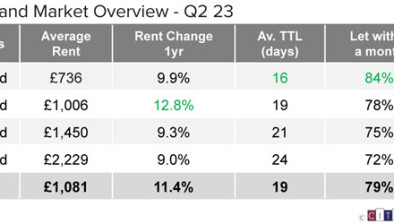Landlord fined £1,500 for keeping deposit in tin at mother’s house
A landlord from Gourock has been ordered to pay his ex-tenant £1,500 after failing to protect her deposit with an approved deposit protection scheme.
On 4 September 2020, following a Case Management Discussion by the Housing and Property Chamber First-tier tribunal for Scotland, Mark Bradley was found to have not protected his tenant’s deposit for five and a half years, when he should have protected it within 30 working days of the start of the tenancy.
In April 2014, Mr Bradley’s tenant paid £600 to Mr Bradley’s mother in instalments for a “rental bond”. The money remained in her house in a tin until September 2019, when the tenant asked for £150 back from her deposit to pay for van removals at the end of the tenancy. The money was paid back by Mr Bradley’s mother in cash.
When the tenant asked for the remainder of her money back, Mr Bradley said he should keep the money due to rent arrears (which the tenant had agreed to pay out of the deposit) and damage to the property. Mr Bradley told the tribunal he still had the remaining £450 in cash as his mother had paid it back to him.
Mr Bradley, who told the tribunal he had been a landlord for 10 or 11 years, said he had never managed the property himself and that his mother dealt with it. He also said he was not aware of a landlord’s duties under the 2011 Regulations and that the deposit had not been paid into a scheme initially due to it being paid in instalments. His mother forgot to protect it after she was dealing with other family issues.
The tribunal found that a sum of two and a half times the amount of the deposit (£1,500) was reasonable in the circumstances for Mr Bradley to pay back to his tenant.
Commenting on the case, Eddie Hooker, CEO of mydeposits, said: “Tenancy deposit legislation has been in place in Scotland since 2012 and before that in England & Wales since 2007. Each time we’ve launched a new scheme, in this case, Scotland, we have worked with the respective governments and stakeholders to communicate the rules to landlords, agents and tenants. Therefore, there is no excuse for any deposit to not be protected with an approved scheme.
“On face value there are some amusing elements to this case, but it is in reality a serious issue. The tenant’s deposit could have easily been misplaced or misappropriated and they have also been denied access to an impartial resolution service at the end of the tenancy. These are exactly the reasons why the deposit schemes were set up.”
He added: “I fear that this type of case is not so unique. Even after 10 plus years of deposit protection laws, there are still many landlords that continue to be unaware of their legal obligations. It is estimated that only 85% of deposits across the country are protected in authorised schemes.
“Including Scotland, this equates to more than 500,000 deposits that fall outside of protection. As this case shows, ignorance of the laws is no defence. At mydeposits, we try to help our members and the wider industry understand their responsibilities and obligations to avoid situations like this happening.”
Mr Bradley has said he is no longer letting out the property in question.
Full details of the case can be found here.








